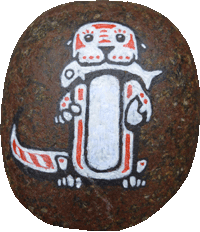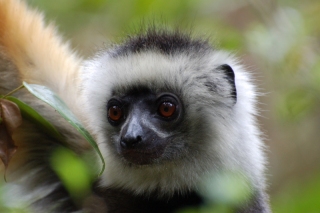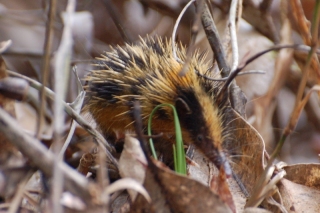We have only been in Madagascar for two weeks, and most of that in national parks, so we can hardly give a complete summary. And since our transport and accommodation was arranged for us, we can’t comment on price. Here’s what we can say…
Accommodation
There are decent hotels in all the main cities and places to visit, and they operate like hotels everywhere. Carry around a spare loo roll with you though, as some places seem strangely niggardly with these. Oh, and one oddity to Madagascar: if you want your room cleaned, you must hand your key to reception in the morning and ask for it.
Food
Malagasy eat a lot of rice, typically with some pork, chicken, beef or fish that has been stewed. The national dish is “ravtoto” – fatty pork cooked with very salty pounded cassava leaves, which is good if you like a strong and salty taste. Hotel food varies from okay to good, and since it was a French colony the menus tend to borrow from that cuisine with varying degrees of success. Oddly for an island that grows and exports loads of spices, they don’t make much use of them in the food. If you want to avoid digestive issues, you might want to pass on raw fruit and veggies even in good hotels.
Drink
The local Malagasy beer, “Three Horses Beer”, is a lot better than the typical local beers of countries we’ve visited (e.g. S Africa, USA, Brazil). It has a full, somewhat fruity taste while still being refreshing. Hotels serve wine, but not particularly good stuff unless you pay through the nose (one American guest asked to see the bottle her wine had come from and was sheepishly told that it was actually a box). The coffee varied from nasty to okay without ever being great. Fruit juice comes in many varieties and is very good.
Transport
You can’t hire your own car in Madagascar, it always comes with a driver. Even the main national roads have some pot-holed sections and are typically never wider than a British “B” road, and since the whole country is hills then travel is seldom higher than 60-80kph; we had several journeys of 8+ hours because most of the places to visit are quite widely distributed. The main public transport is the taxi-brousse, a minibus packed with passengers that I’m quite sure would have made me sick if we had used them. There are ten or so airports to whisk tourists around the island with more speed and comfort.
Language
Most Malagasy in the city or in tourist areas have pretty good French as a second language, so if you know some that’s useful. Those involved in tourism tend to have a handful of words of English but not much (our guides had good English though). Just learn a few words of Malagasy, like “selama” for hello and “misoatra” for thank-you and you’ll get some friendly smiles back – it seems lots of visitors to Madagascar never bother trying.
Weather
We were here in September, which is spring. In the west it was warm at night and hit an energy-sapping 32+ in the middle of the day. In the eastern rainforests the days were warm, hot in the sun, but the nights were actually fairly cold. Likewise in Antananarivo and Antsirabe.
Scams and hassle
None noted. Shops in Madagascar charge a fixed price and haggling isn’t really expected, though in markets and craft markets especially it works as usual: perhaps double the real price is asked in the craft market in Tana, according to our guide. There were a handful of beggars and people selling tat, but not persistently or aggressively.
Crime and security
We had a guide the whole time, and didn’t encounter any. However, he had tales of muggings and the country is in a political crisis right now. In a developing country a lack of strong government tends to result in a big rise in crime, which is just what Guy told us is happening.
Hiking and wildlife watching
The fauna in Madagascar is unique on the planet, not only the lemurs but all the wealth of reptiles, amphibians and birds. Being found almost exclusively in dense forests, most of it is hard to find without a good guide. The walking at Ampijoroa is fairly easy, with flat paths through the deciduous woodlands. The walking in the eastern rainforests at Andasibe and Ranomafana can be more hilly with some difficult footing on roots; still fairly easy if your guide sticks to the main paths, but to find some animals they may go “off piste” and then you’re in real jungle. At Andasibe and Ranomafana don’t expect to see the lemurs on your own – we weren’t even in the peak month, and often shared a sighting with 6+ others. The guides call out to each other, and at Ranomafana even phone through sightings.
Conclusion
Guy tells us that Madagascar attracts French tourists for the people and culture, Italian tourists for the beaches and English-speaking tourists for the wildlife. This sums up well the attractions of the island. Although a very poor developing country, it is one of primitive rural tribes rather than cities of sprawling slums, and so much more pleasant to tour around than some more advanced countries. The wildlife is unique, but does not have as much variation in it as a more “typical” African wildlife destination. We’d return eventually to see more, but not for a few years. If you have any other questions, so that we can expand our nutshell summary, post them in the Comments please!
Related Images:
















































Nice summation, have always wanted to visit madagascar, great photo’s of the lemur headgear, some of those critters have even more fur than Kev and are infinitely more cuddly..
We were very focussed on wildlife – I reckon a more varied trip to Madagascar would make for a stunning trip. And surely even the chameleons are more cuddly than Kev?